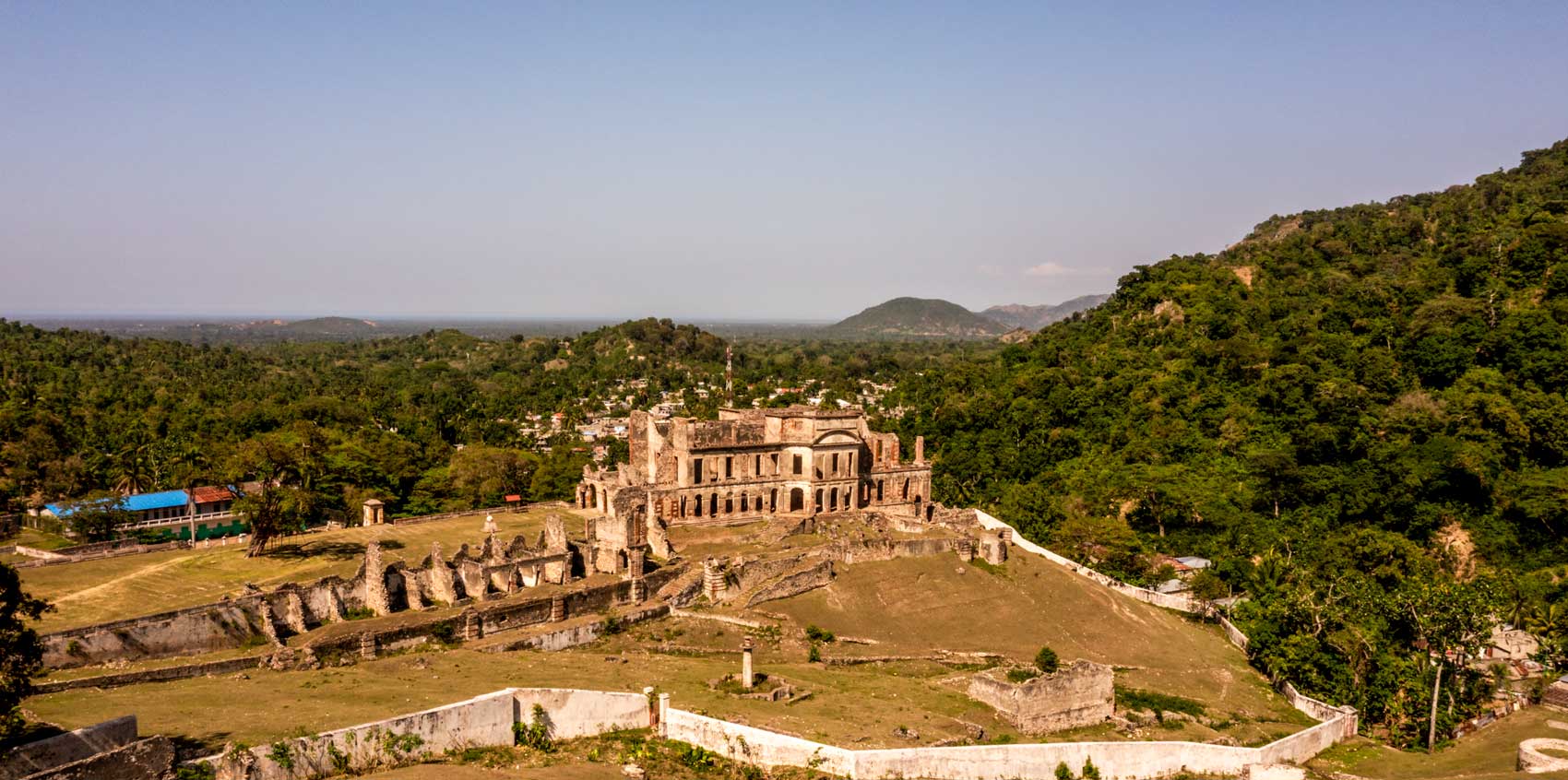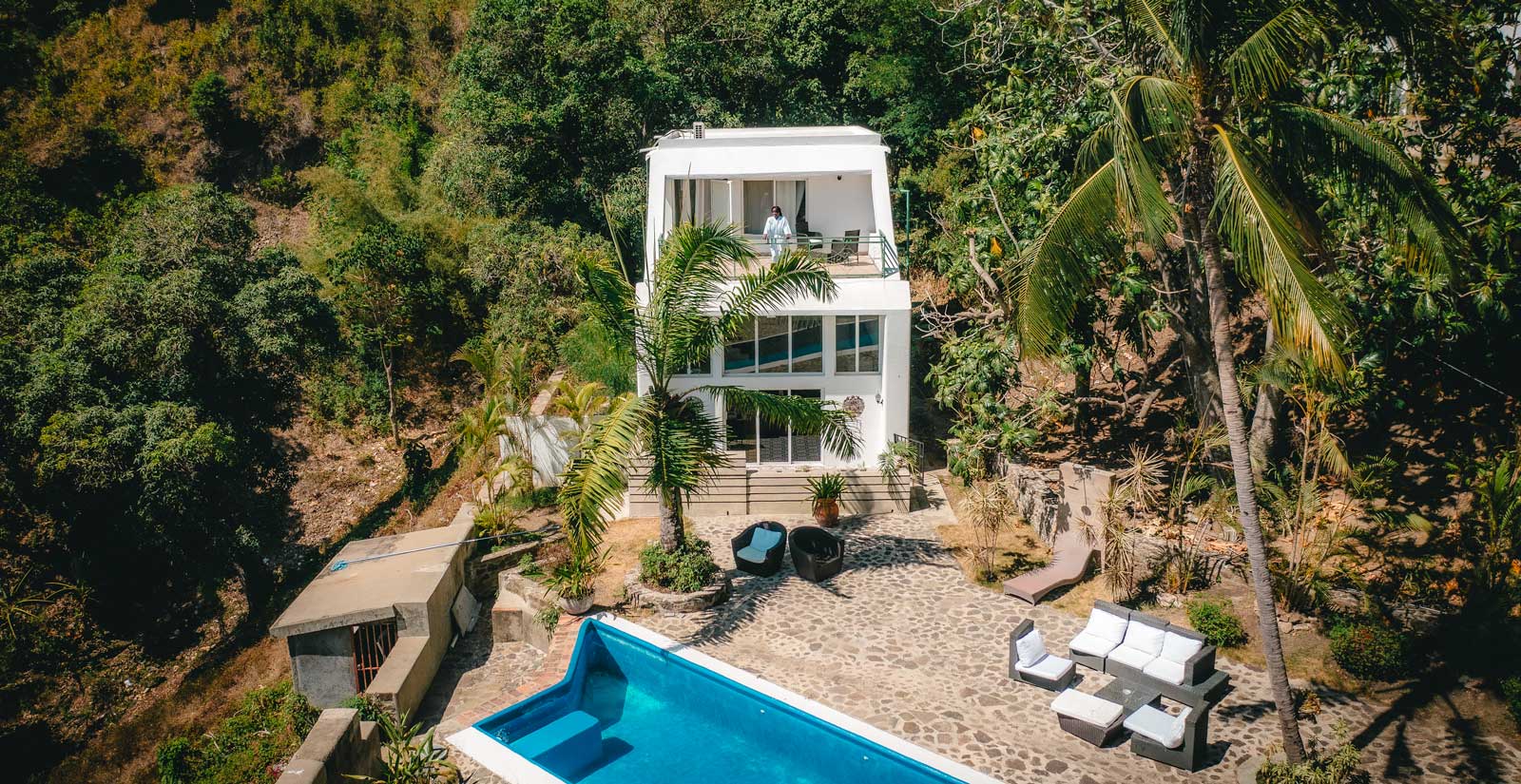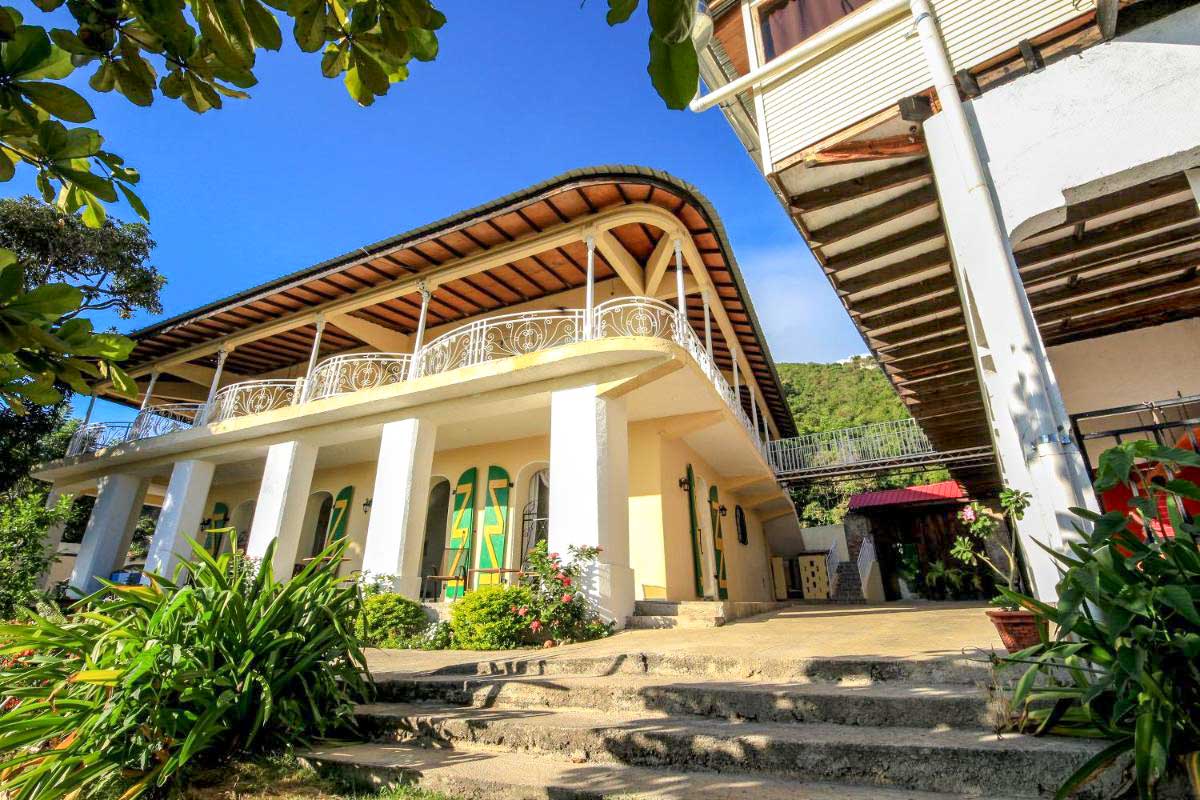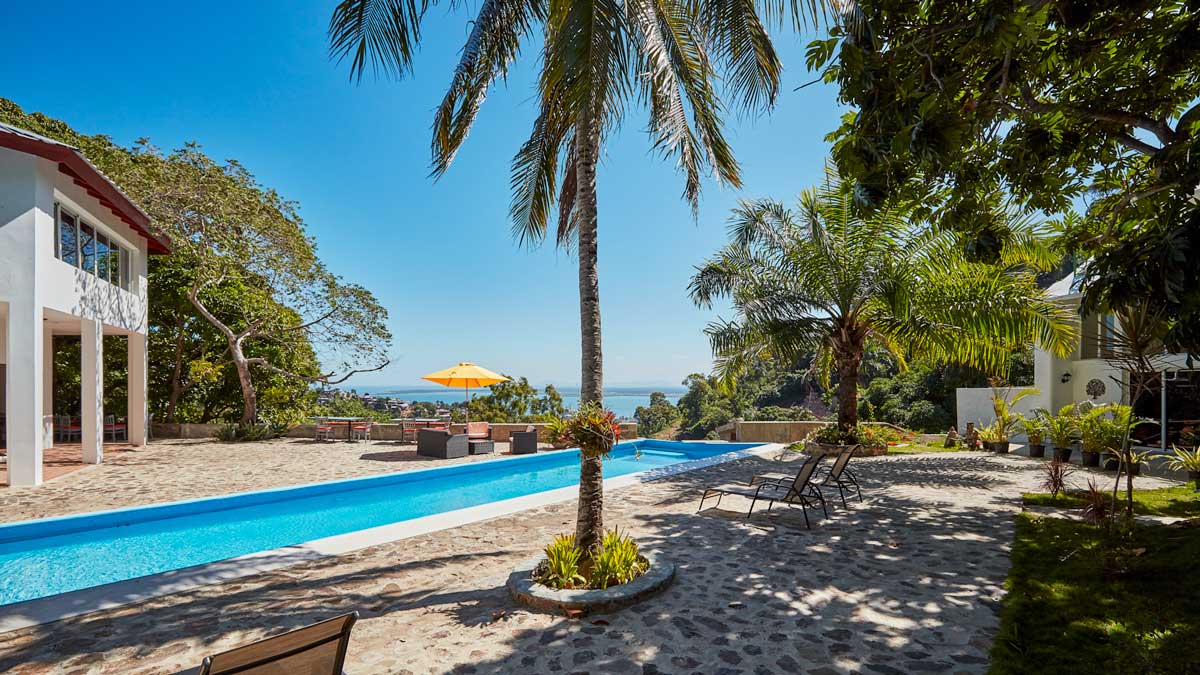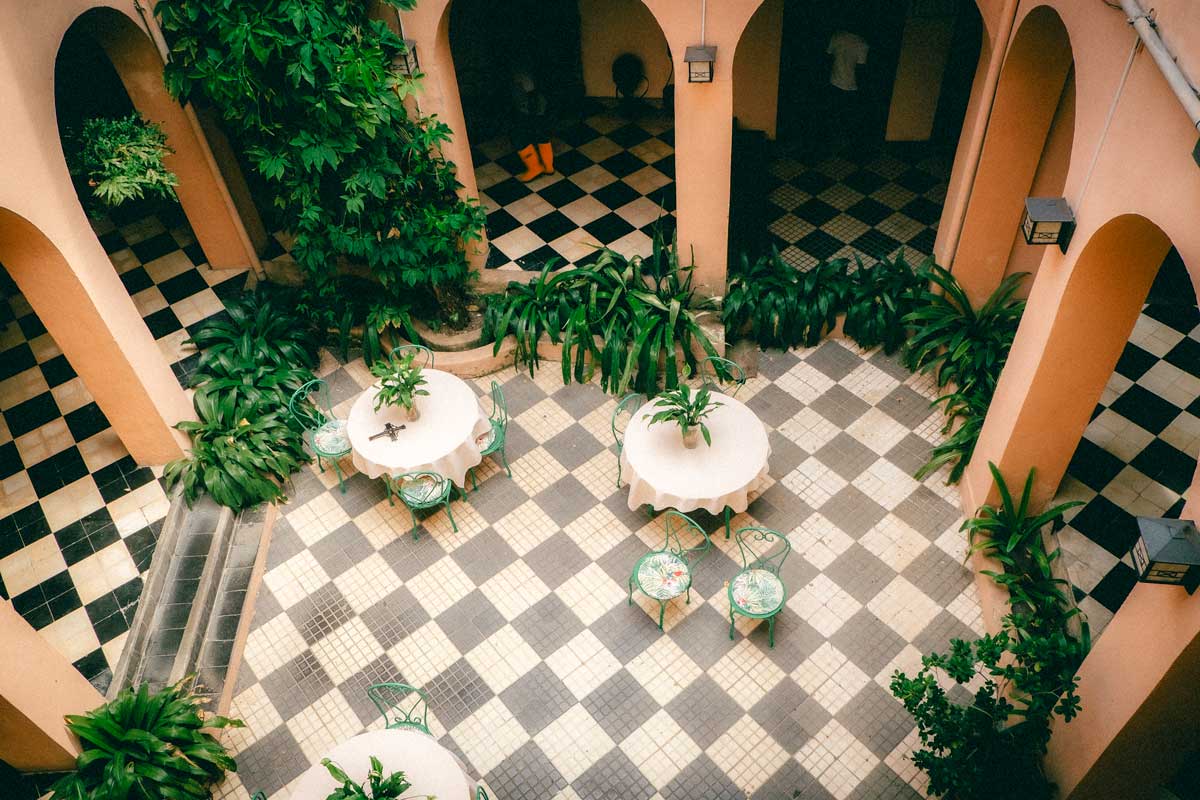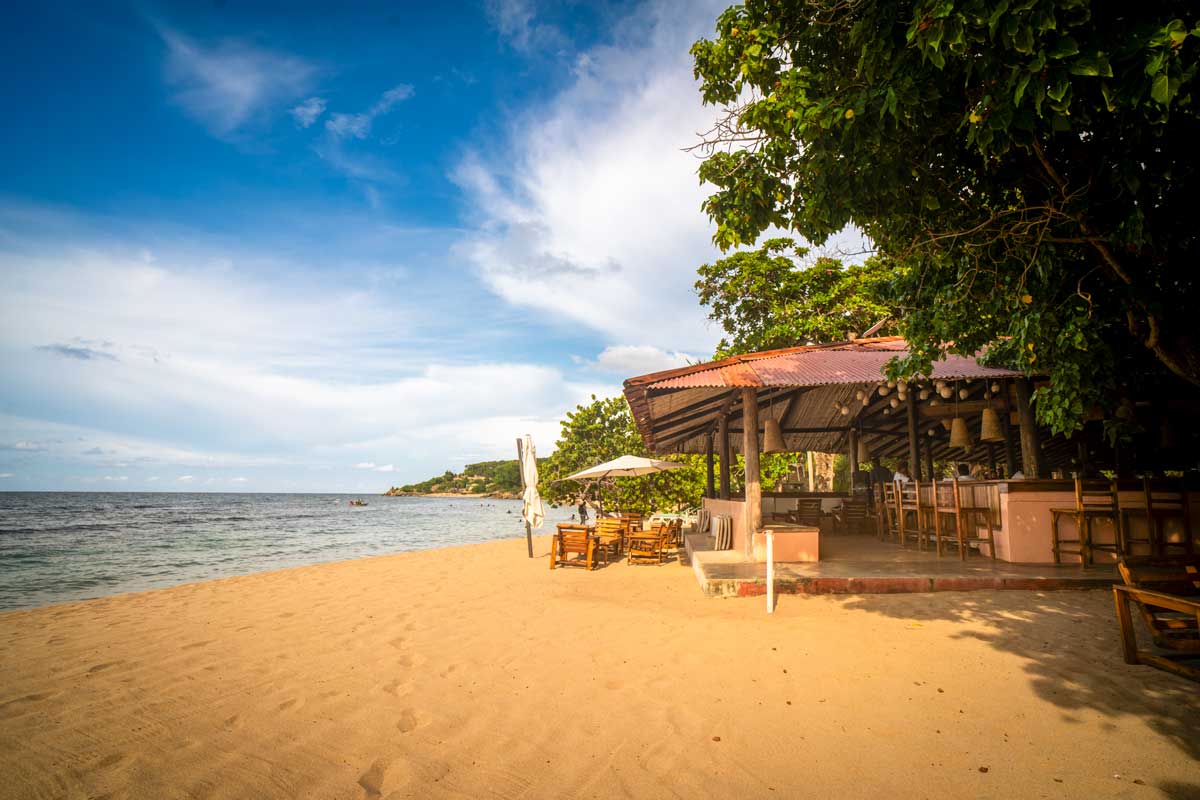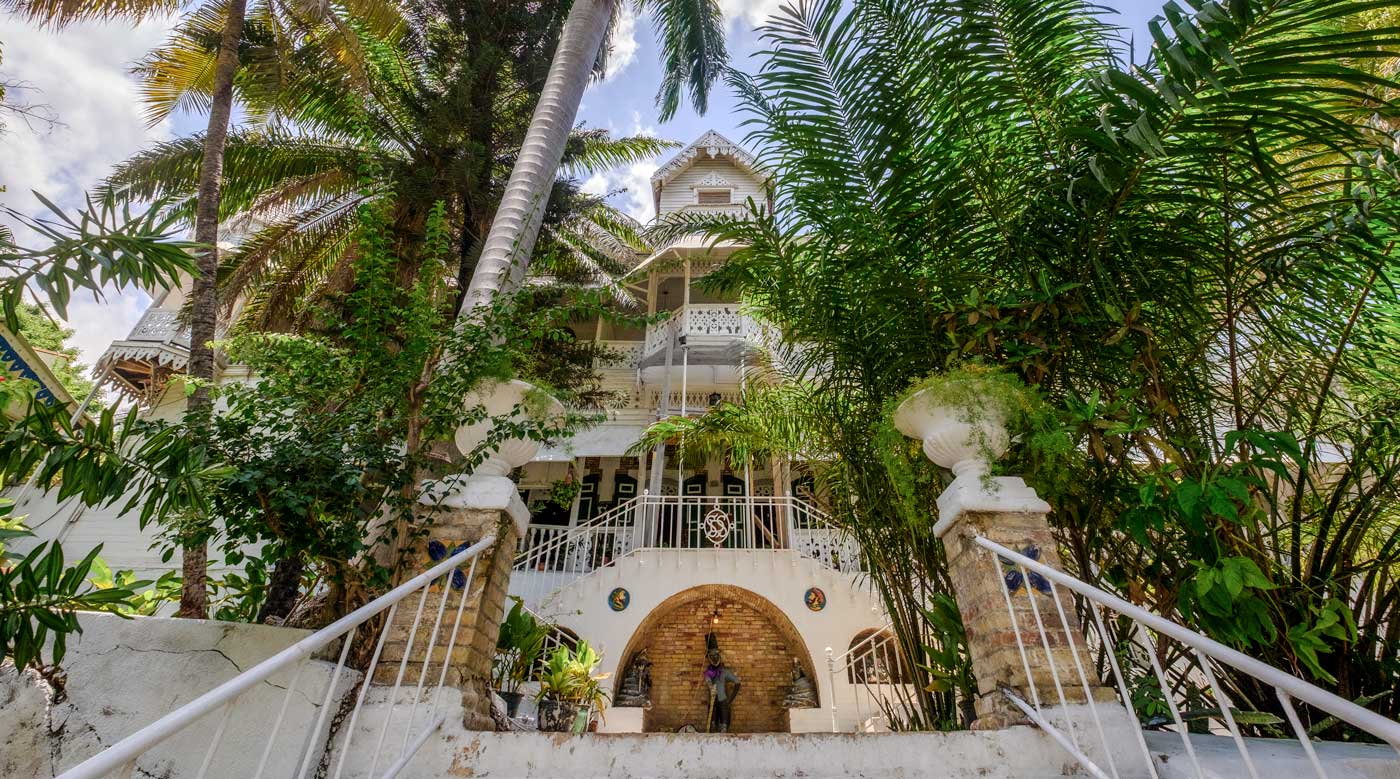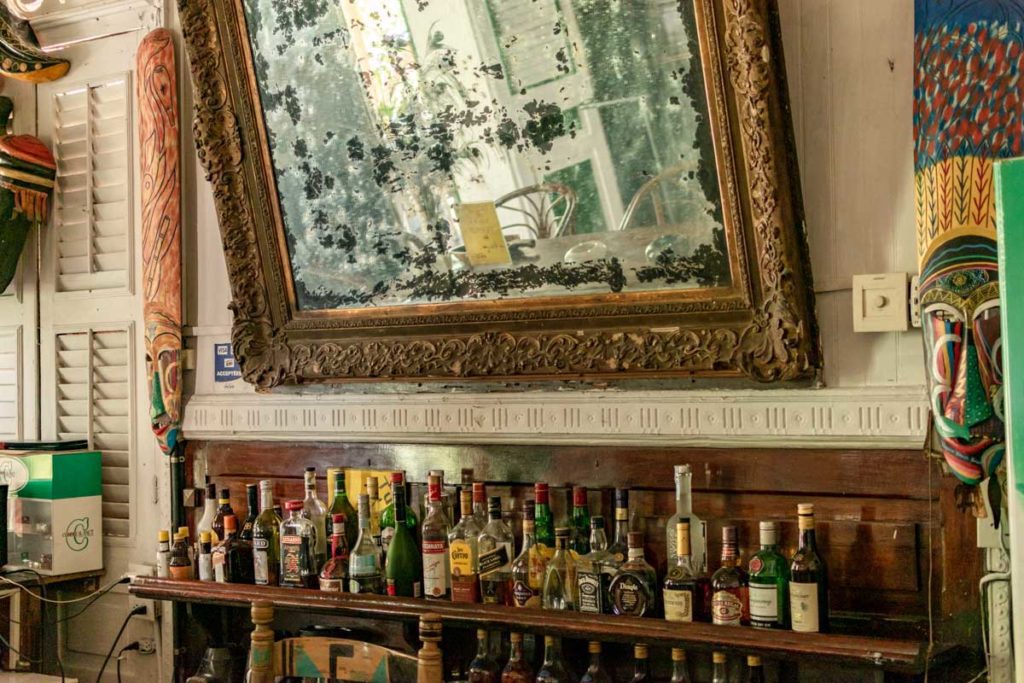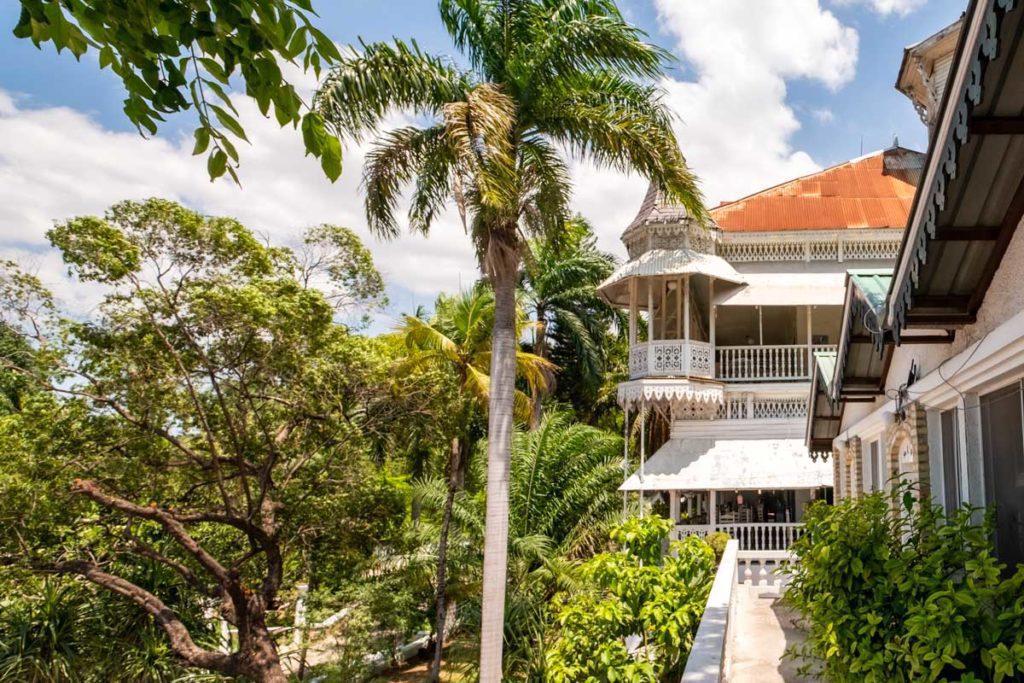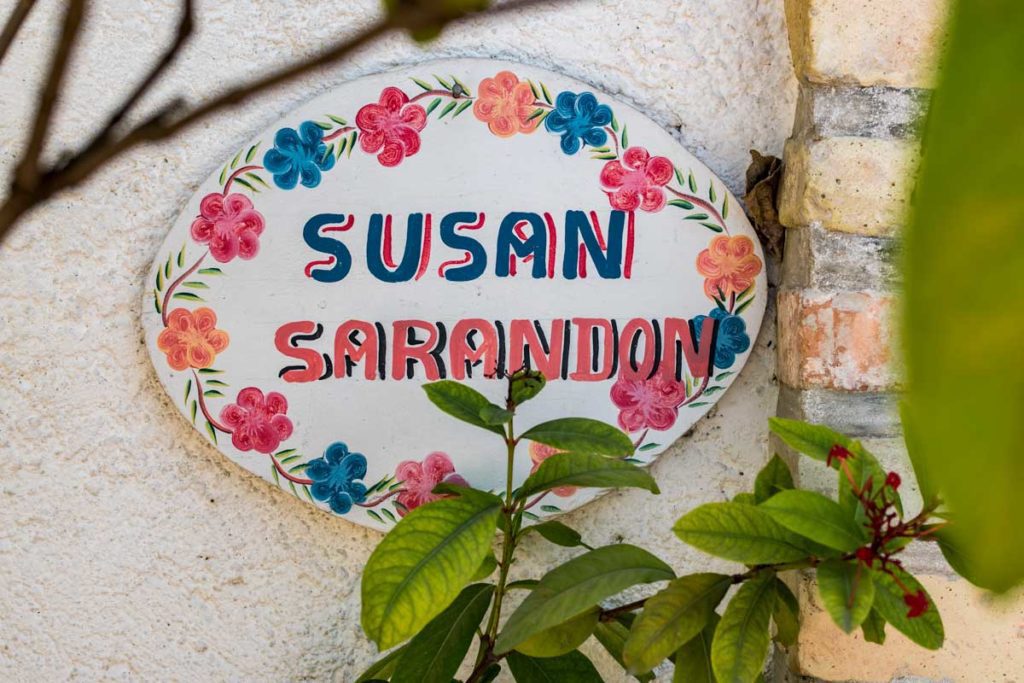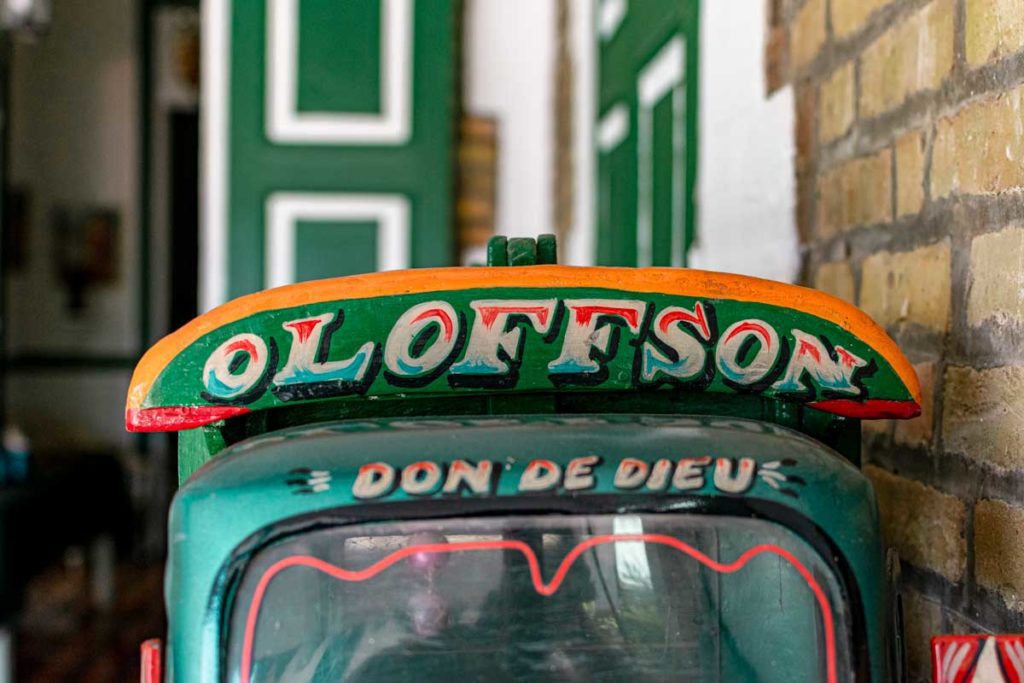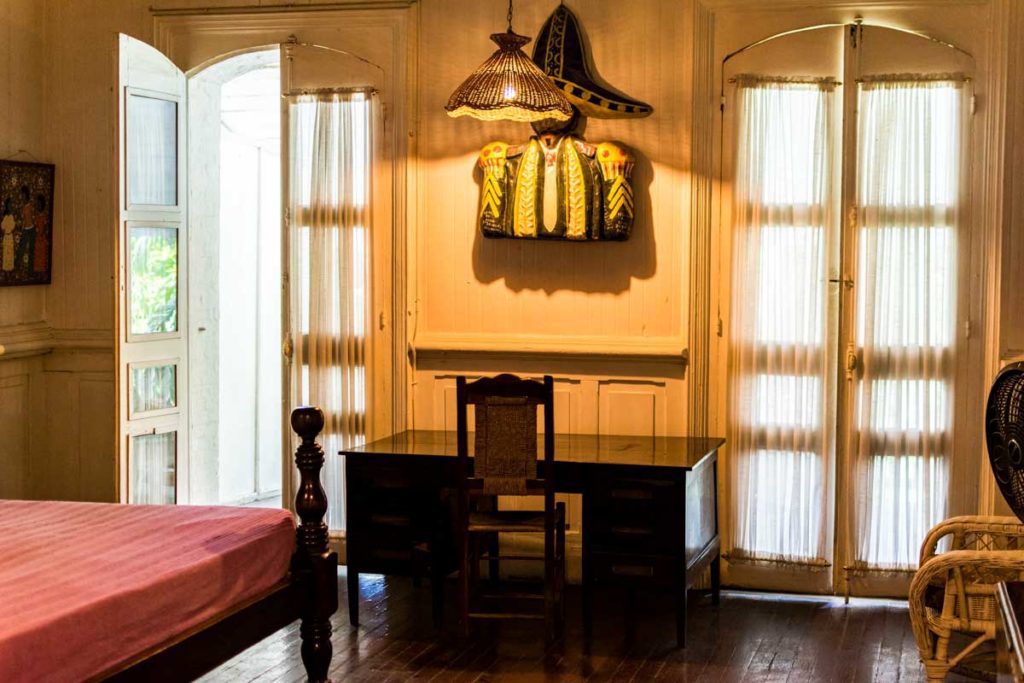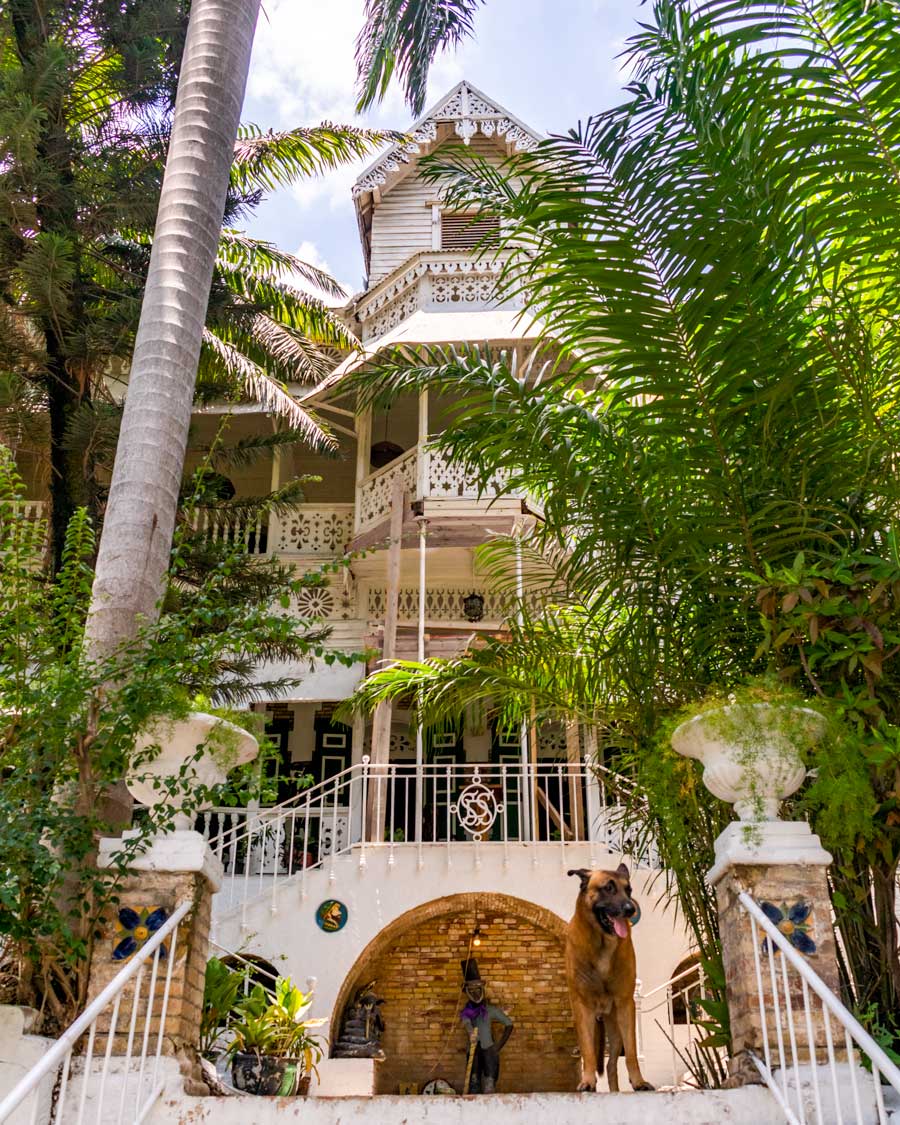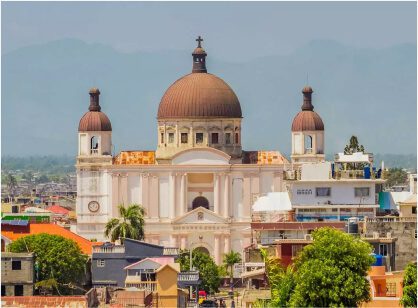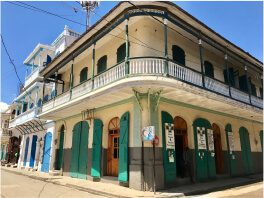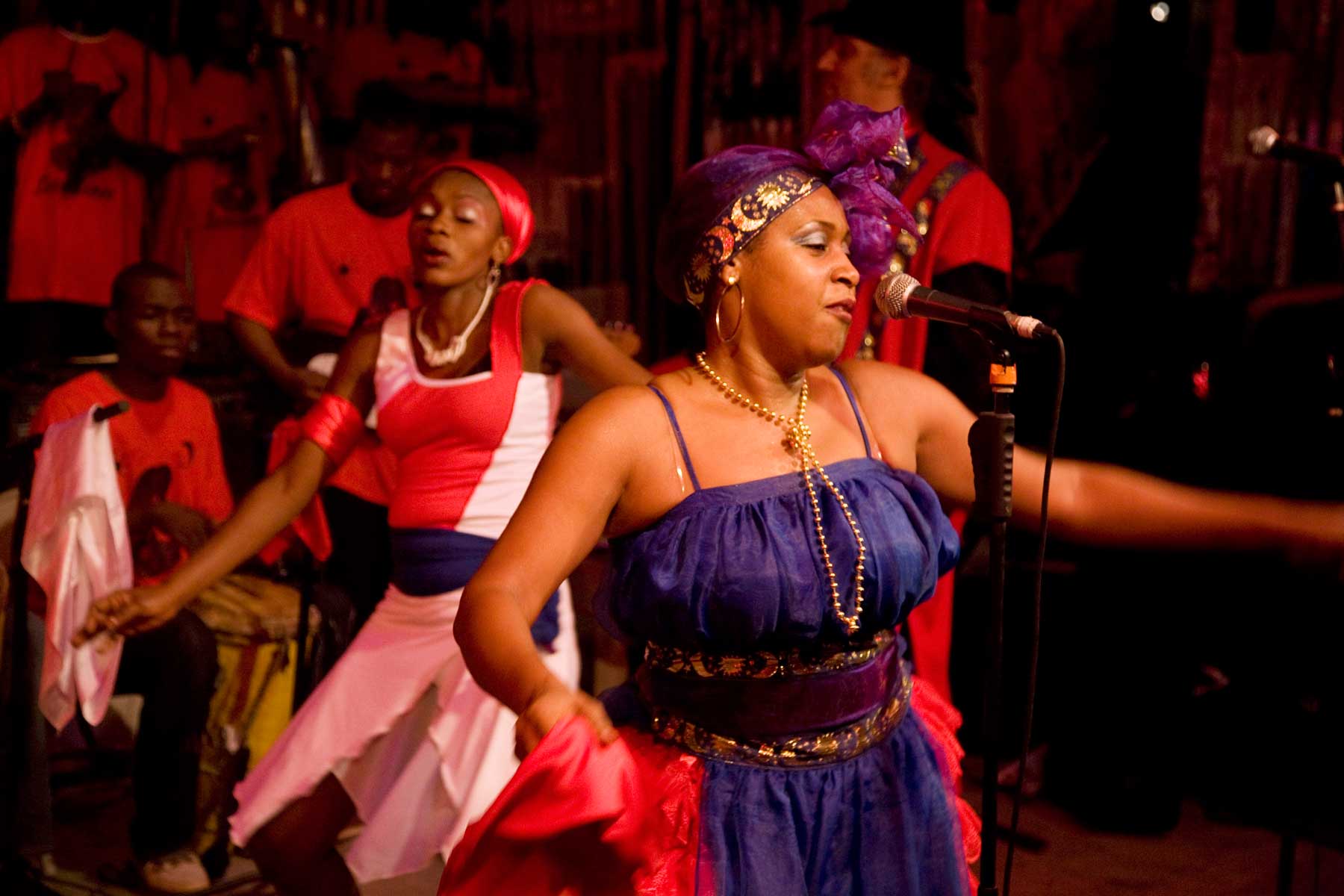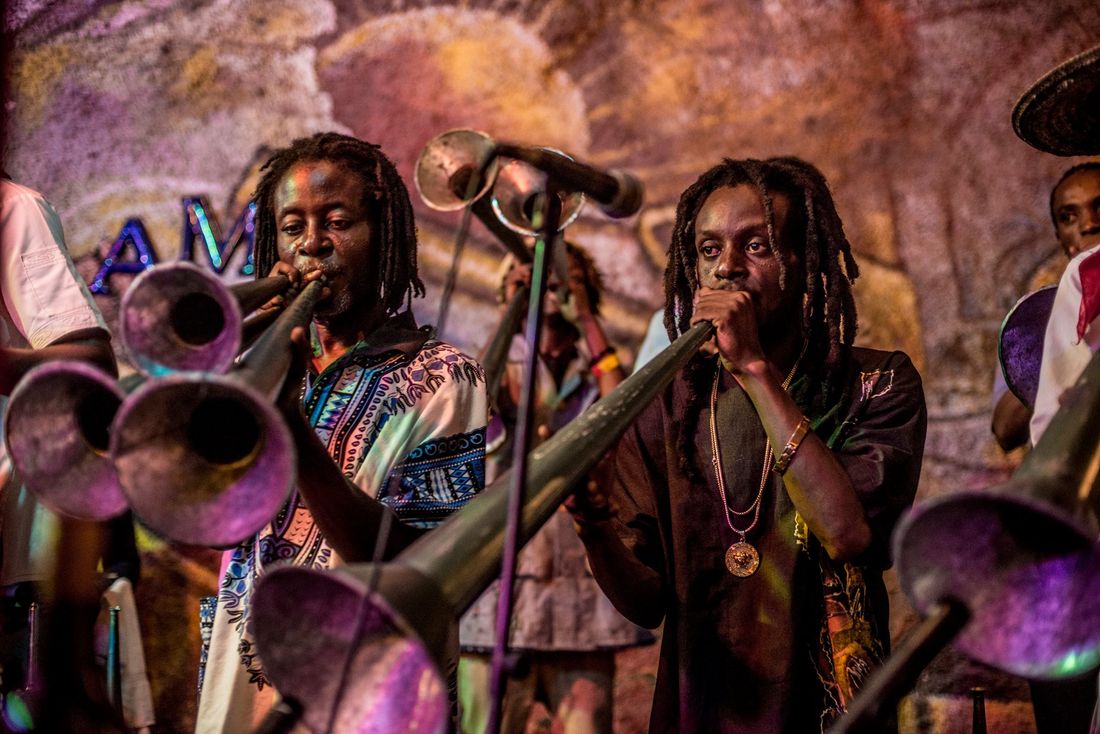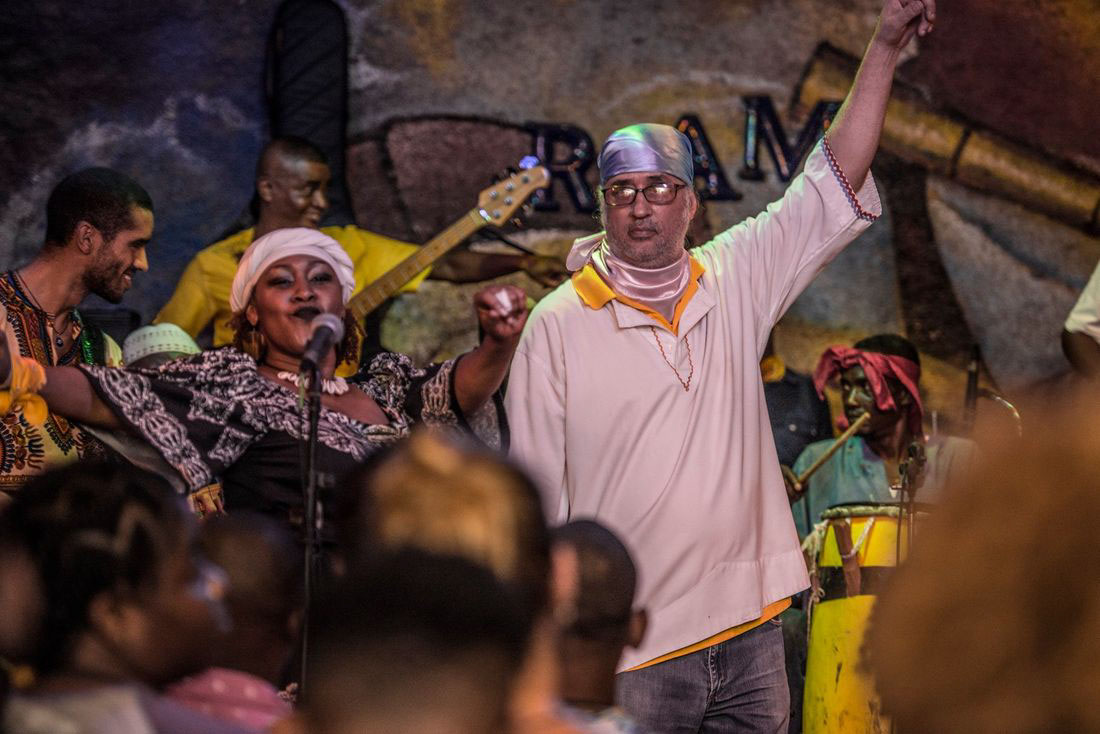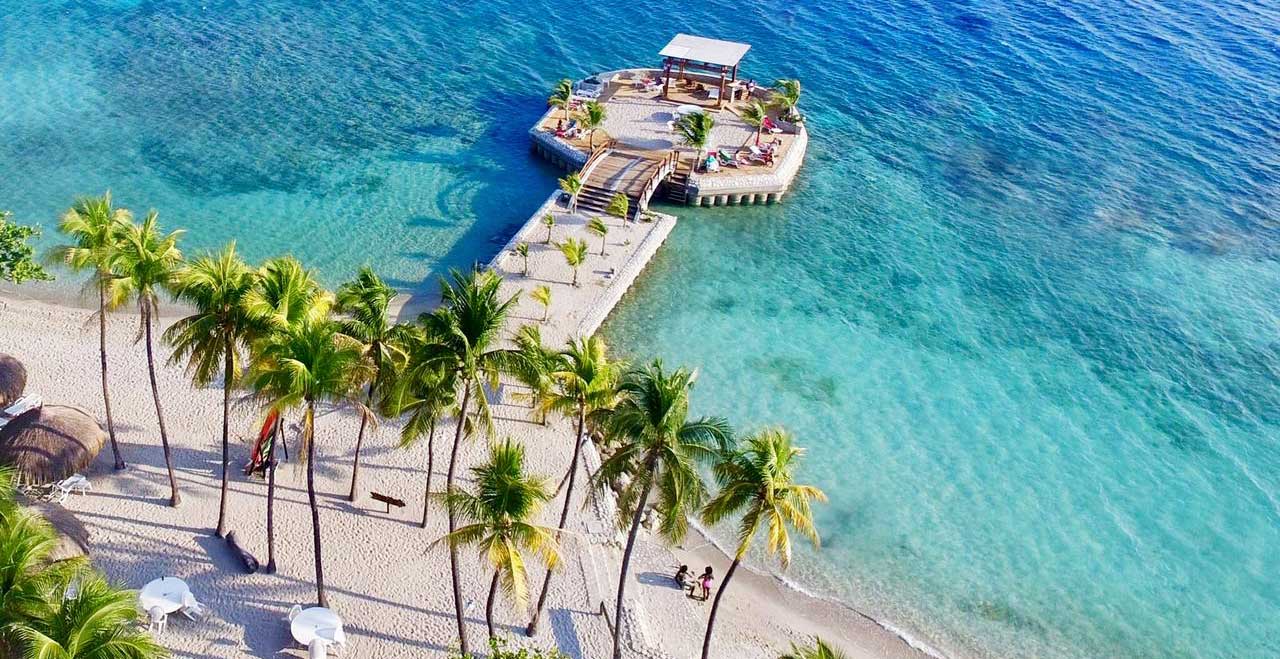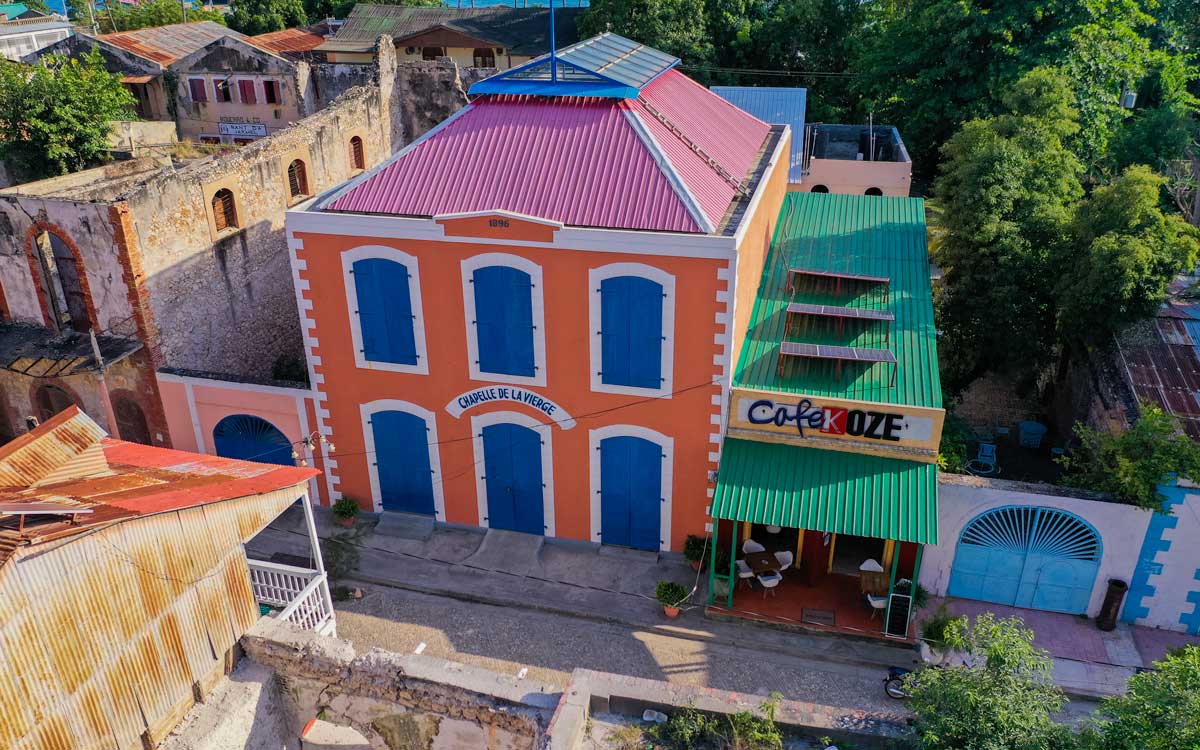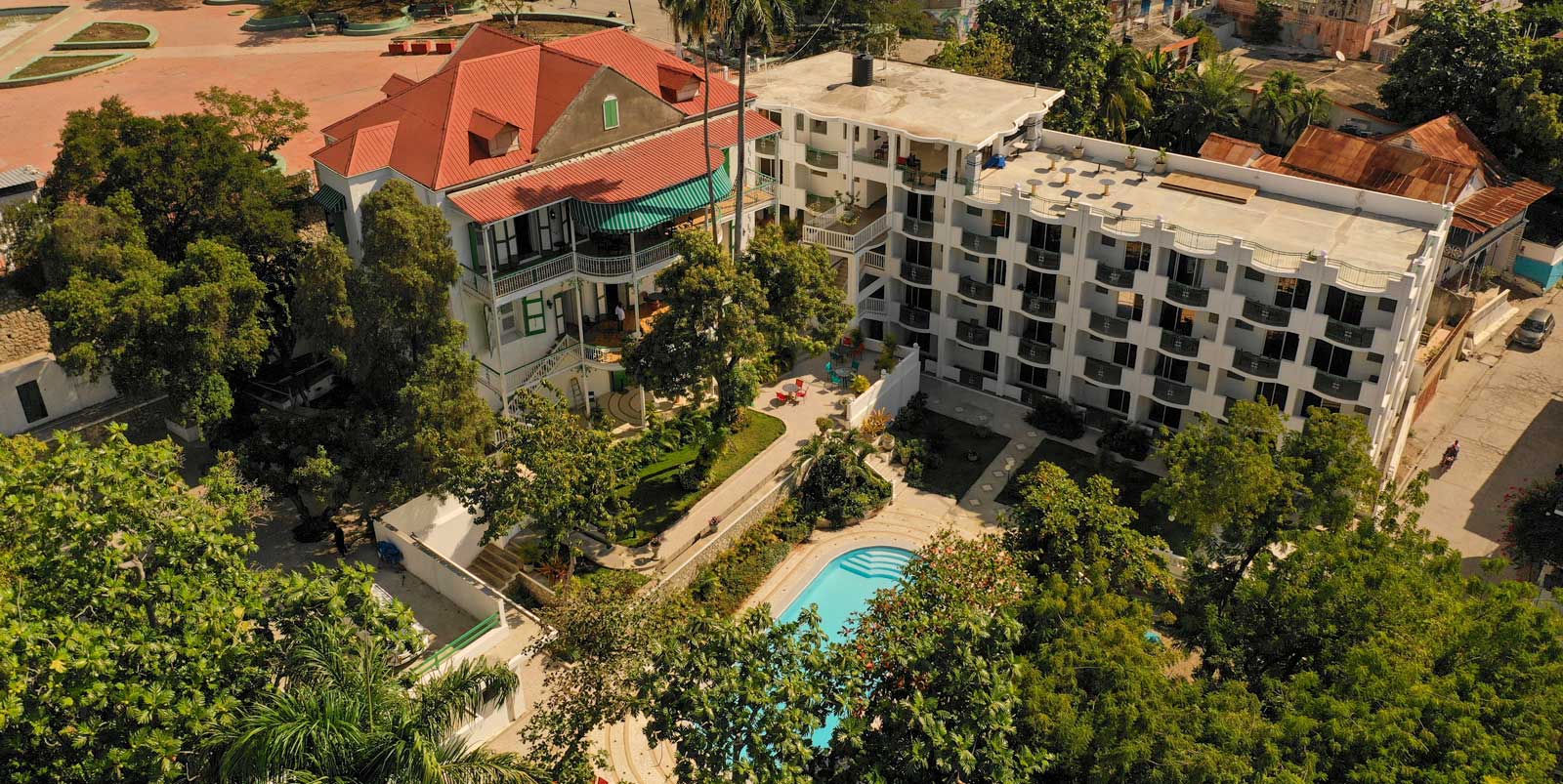
Photo: Mikkel Ulriksen
Where to Sleep, Swim, and Slow Down in Jacmel
From gingerbread mansions to jungle-shaded surf shacks, these are the stays that capture Jacmel’s quiet magic. Intimate, design-minded, and full of soul — here’s where to check in along Haiti’s creative coast.
With its faded gingerbread mansions, palm-lined seafront, and a creative spirit stitched into nearly every balcony and breeze, Jacmel is a city that hums quietly with charm. Haiti’s cultural capital is no stranger to beauty — or contradiction. One minute you’re sipping Haitian rum under the stars in a crumbling 19th-century courtyard, the next you’re paddling across a private cove surrounded by coconut trees.
While Jacmel may not have five-star hotels or infinity-edge anything, it offers something rarer: soul. The kind of place where the paint peels just right, where the sea is never far, and where the best stays feel like secrets — half-whispered from one traveler to another.
From historic hideaways in the heart of the old town to barefoot surf lodges tucked deep into the hills, these are the places we think are worth waking up in.
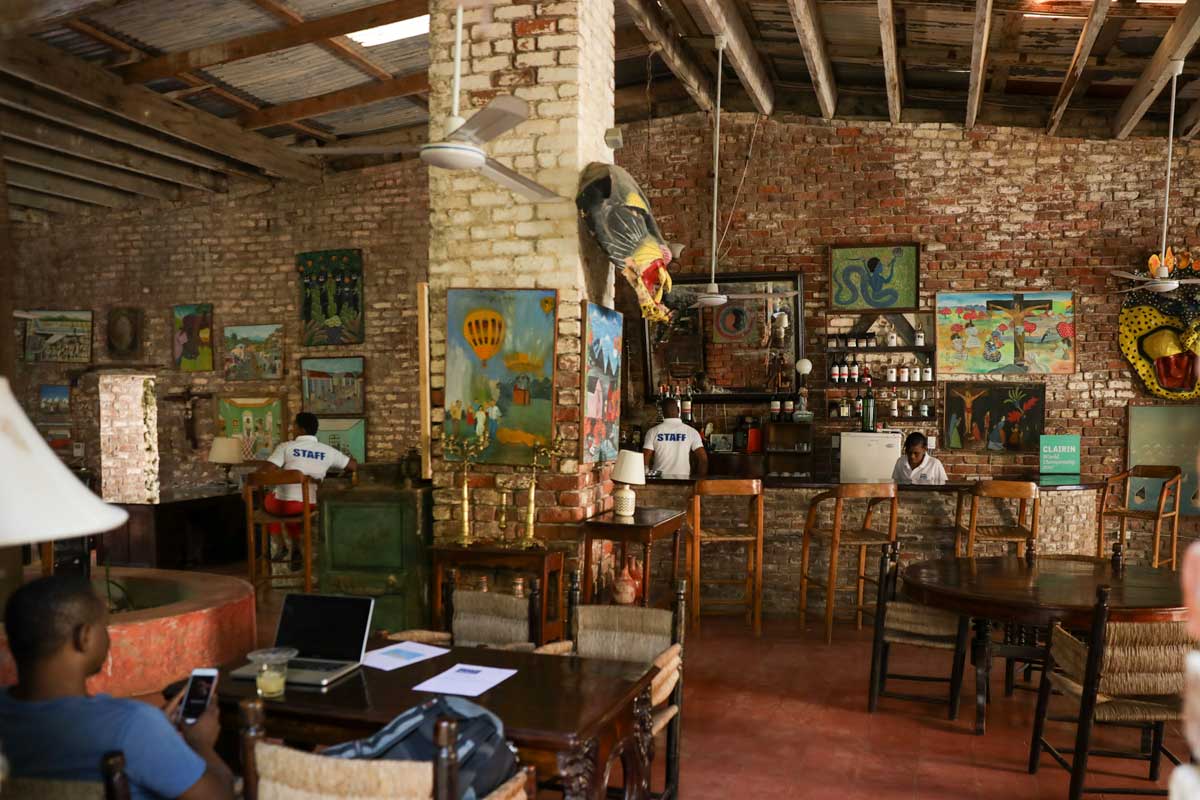
Photo: Mikkel Ulriksen
1. Hotel Florita
For those with a taste for poetic decay and a soft spot for stories embedded in floorboards, Hotel Florita is where you’ll want to unpack your bags — and your notebook. Built in 1888 as a coffee magnate’s mansion, this baby-blue and white landmark — complete with iron columns and creaky wooden stairs — is the only 19th-century building in Jacmel’s historic district still doing what it was meant to do: host lively conversation, long nights, and travelers with time to waste.
There’s no pool, no spa, and no polished concierge — but there is a balcony overlooking Rue du Commerce, a rum sour waiting at the bar (the first one’s on the house), and original artwork by legendary Haitian painters like Philomé Obin and Gérard Fortuné. The vibe channels that same faded grandeur you’ll find at Hotel Oloffson in Port-au-Prince — part literary relic, part film set.
Thursday nights are when the courtyard comes alive, pulsing with music, dancing, and a crowd of artists, expats, and old poets who seem to drift in and never fully leave. In the morning, slip next door to Café Koze for an iced coffee or a slice of carrot cake before tracing your steps through Jacmel’s gallery-lined streets. But don’t be surprised if Florita keeps calling you back — it’s the kind of place that makes you believe in ghosts, and maybe even in staying still.
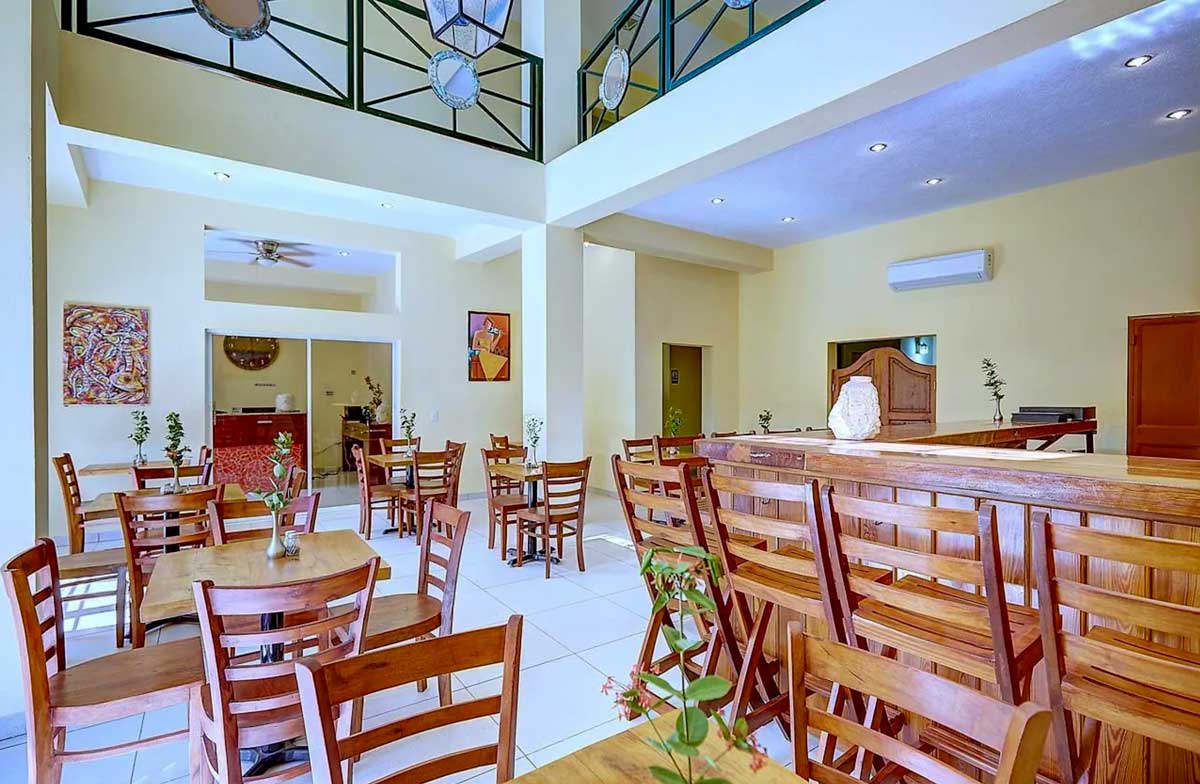
Photo: L’Auberge du Vieux Port
2. L’Auberge du Vieux Port
Just 15 metres down from Hotel Florita — but a world apart in feel — L’Auberge du Vieux Port wears a colonial façade with freshly painted confidence. Think green shutters, brickwork, and an old-world exterior that nods politely to Jacmel’s past. Step inside, though, and it’s clear: this isn’t a time capsule. The interiors are concrete, clean, and quietly contemporary — more comfortable guesthouse than crumbling mansion.
Owned by a warm Haitian husband-and-wife team who are often on-site, the hotel hosts weekly Friday night jazz sessions that spill out from the restaurant onto the street. Expect small tables, live music drifting through open doors, and clinking glasses of house-made Bomuzack rum under the stars.
The food here is quietly excellent — elevated Haitian comfort dishes with generous portions — and while the vibe is less “wandering poet” than its neighbour up the street, it’s no less local. Think families, couples, and groups of friends gathered for a mellow night out. The atmosphere? Pure Jacmel: musical, unhurried, and impossible to fake.

Photo: Mikkel Ulriksen
3. Manoir Adriana
Tucked just a few minutes from Rue du Commerce, Manoir Adriana is a hotel of split personalities — and that’s its charm. On one side: a towering, beautifully restored Haitian gingerbread mansion, all fretwork, balconies, and old-world romance. On the other: a concrete modern addition that houses thirty guest rooms, each with a balcony overlooking a lush courtyard and the largest pool in Jacmel’s city center. The effect is surreal — like sleeping in a novel. Which, in fact, you are.
The name “Adriana” nods to Hadriana in All My Dreams, René Depestre’s celebrated 1988 novel set in Jacmel, about a young French woman transformed into a zombie on her wedding day. It’s fitting — this place lives somewhere between reality and myth.
Inside the gingerbread house you’ll find the bar and reception, plus breezy wraparound verandas perfect for lingering over a cool drink. Rooms in the annex are modern, spacious, and come with air-conditioning — though, at the time of writing, Jacmel’s electricity woes make it more wish than guarantee. Still, for travelers wanting a pool, a bit of space, and a hotel that straddles both past and present, Manoir Adriana hits a rare sweet spot: somewhere between storybook and staycation.
See rooms and rates at Manoir Adriana Hotel!
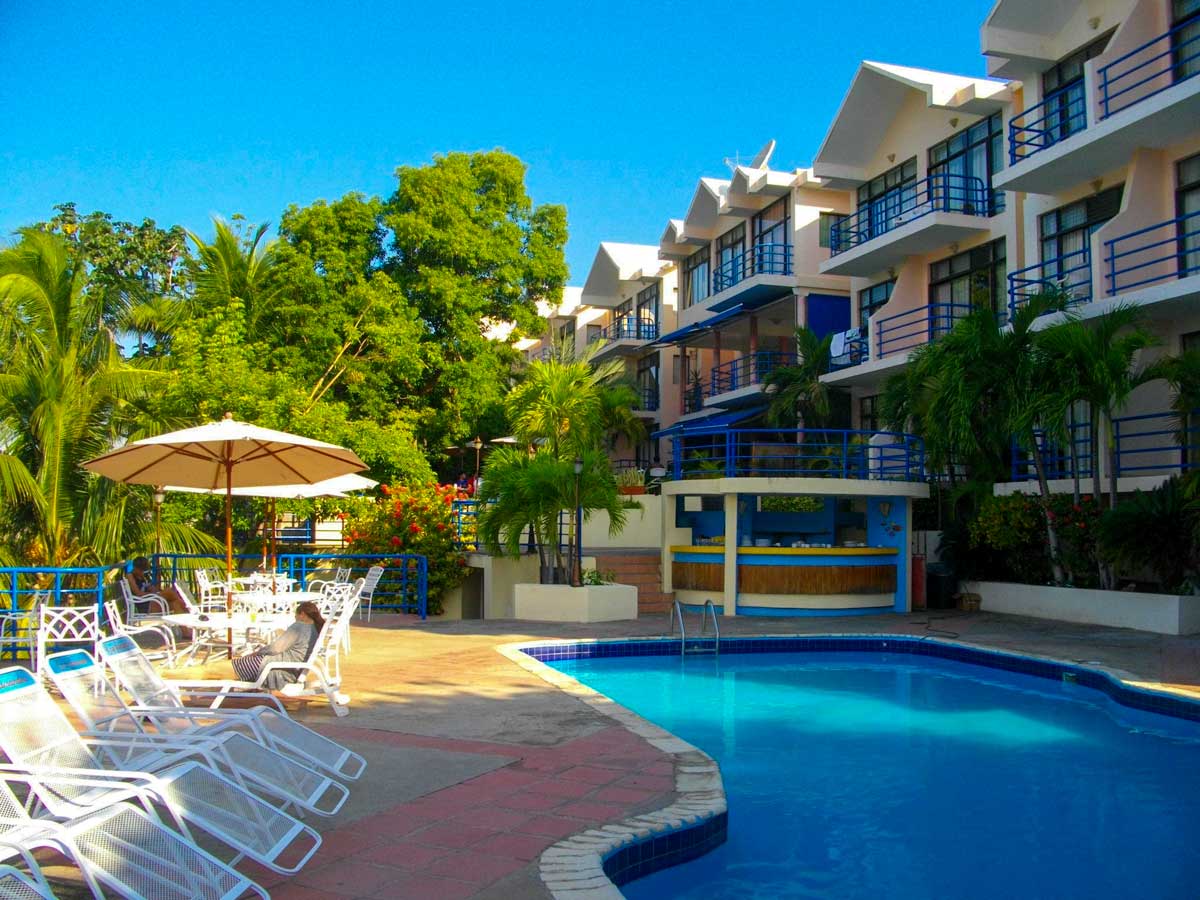
Photo: Cap Lamandou
4. Cap Lamandou
Perched above Jacmel Bay on a quiet stretch of coastline, Cap Lamandou is a short drive — and a bumpy dirt road — from the city center, but rewards the detour with big skies, ocean air, and the kind of views that never get old. All 32 rooms face the water and come with balconies — opt for the top floor if you want that cinematic, sun-on-the-horizon moment. Built in 2003 and largely untouched since, the hotel has a certain throwback charm: clean, functional, and just a little bit frozen in time.
There’s a large pool that’s almost always blissfully uncrowded, a modest gym (rarity in these parts), and a small beach just down a rocky path — not private, but usually empty enough to feel like it is. The restaurant is a slow burn, so order early — but it’s worth the wait. Expect plates piled high with grilled lobster, poisson gros sel, and octopus, all served with a sharp, fiery side of pikliz that’ll wake up even the sleepiest taste buds.
You’ll likely be sharing the scene with Haitian families on weekend getaways and NGO workers recharging over Prestige beers. Not much is walkable, but if you ask around, a boat can ferry you across the bay to Baguette — a wild, lesser-known beach that feels like a secret whispered by the sea.
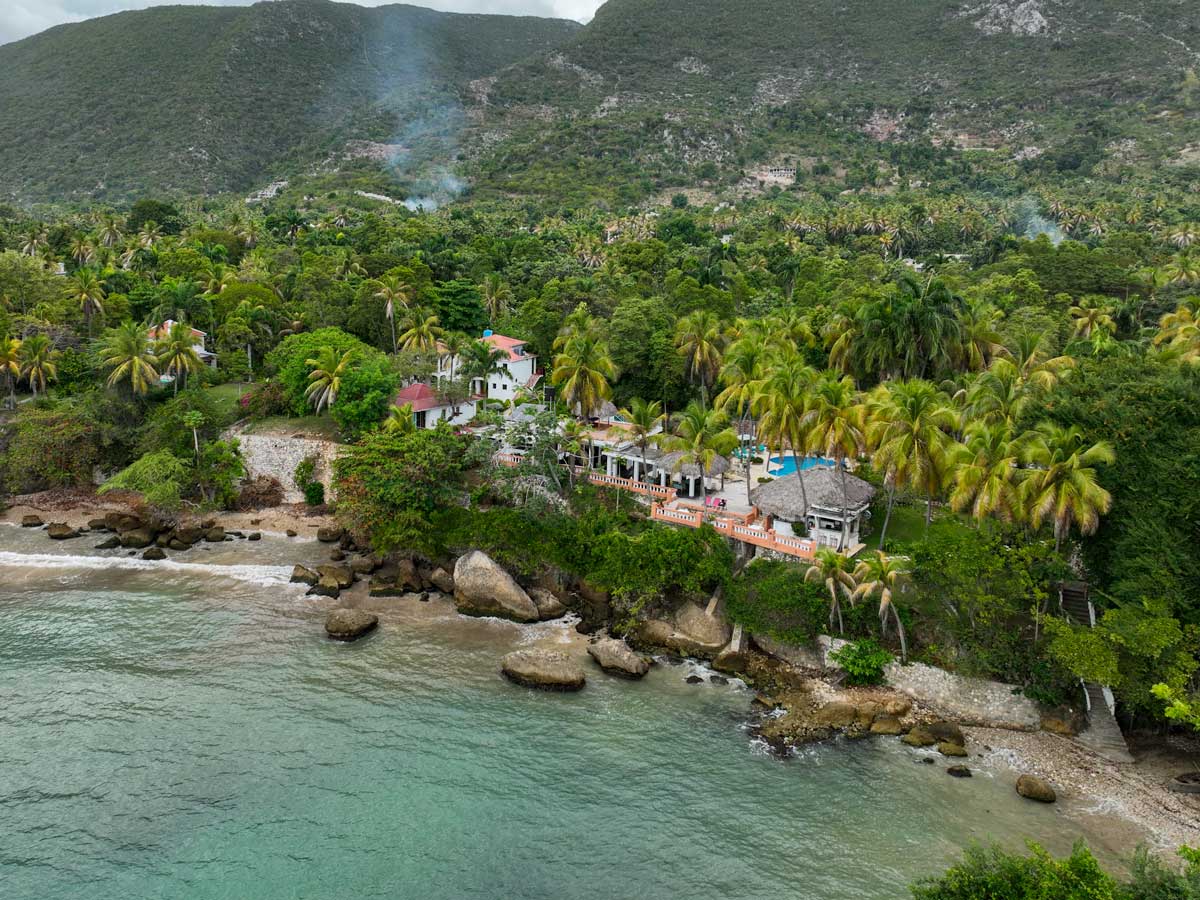
Photo: Jean Oscar Augustin
5. Hotel Cyvadier Plage
Twenty minutes outside Jacmel, tucked into a secluded, U-shaped cove, Hotel Cyvadier Plage has the kind of off-the-map feel that makes you forget how close you are to town. It’s not a luxury resort — and doesn’t pretend to be — but this family-run hideaway gets the important things right: swimmable waters, towering palms, and sunrise views that make early wake-ups feel like a spiritual practice.
The rooms are rustic and no-frills, but most guests spend their time outdoors anyway — either lounging by the pool, paddling across the calm bay on stand-up boards, or climbing down the stone staircase to the small, quiet beach below. The open-air restaurant is the perfect perch for a long lunch. Order the Thai lambi — tender conch in a curry-like sauce — and pair it with a cocktail and the ocean breeze.
Looking for a little more action? Head to nearby Raymond-les-Bains, a beloved local beach that turns into a full-blown scene on weekends. Think boomblasters, buckets of grilled seafood, plastic chairs in the sand, and umbrella-shaded joy.
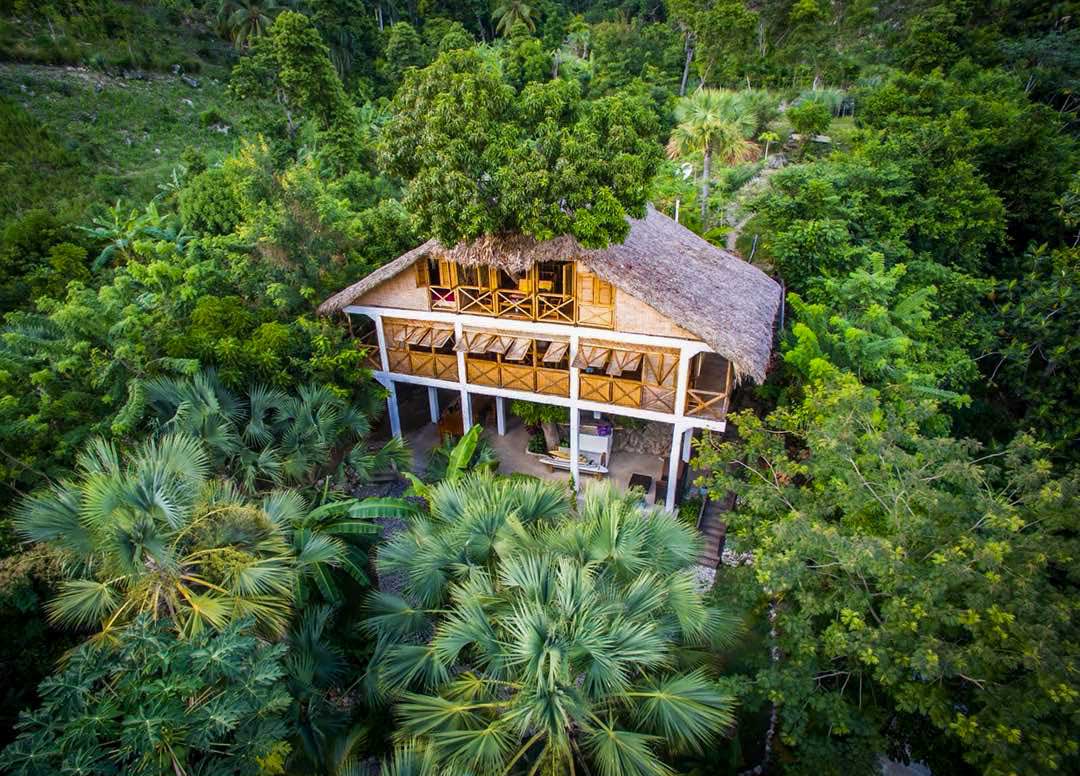
Photo: Haiti Surf Guesthouse
6. Haiti Surf Guesthouse
For those willing to trade room service for jungle silence and a surfboard, Haiti Surf Guesthouse is where the road — quite literally — goes off the map. Tucked deep into the hills above Cayes-Jacmel, about 40 minutes from the city of Jacmel, this rustic eco-lodge is all wooden bungalows, palm-thatched roofs, and trees so tall they block any glimpse of the sea. You’ll need a 4×4 or a steady moto to reach it, but the reward is a kind of wild, unplugged magic you won’t find anywhere else in Haiti.
Don’t expect air-conditioning or infinity pools. What you get instead: a communal kitchen, a low-key crowd of surfers and creatives, a restaurant serving strong cocktails and even stronger coffee, and a freshwater creek that runs straight through the property, feeding a spring-cooled plunge pool that’s as clear as it is cold. It’s the kind of detail that makes you believe in the art of slow living.
A short ride away lies Kabik Beach — one of Haiti’s best surf spots — where the waves roll in steady and the lineup is, well, nonexistent. The guesthouse rents boards and arranges lessons with local instructors. Most days, it’s just you, the ocean, and the sound of your own breath.
Looking for more boutique stays across the country? Check out our guide to Haiti’s coolest independent hotels!
Explore More of Jacmel

Paradise for your inbox
Your monthly ticket to Haiti awaits! Get first-hand travel tips, the latest news, and inspiring stories delivered straight to your inbox—no spam, just paradise.






